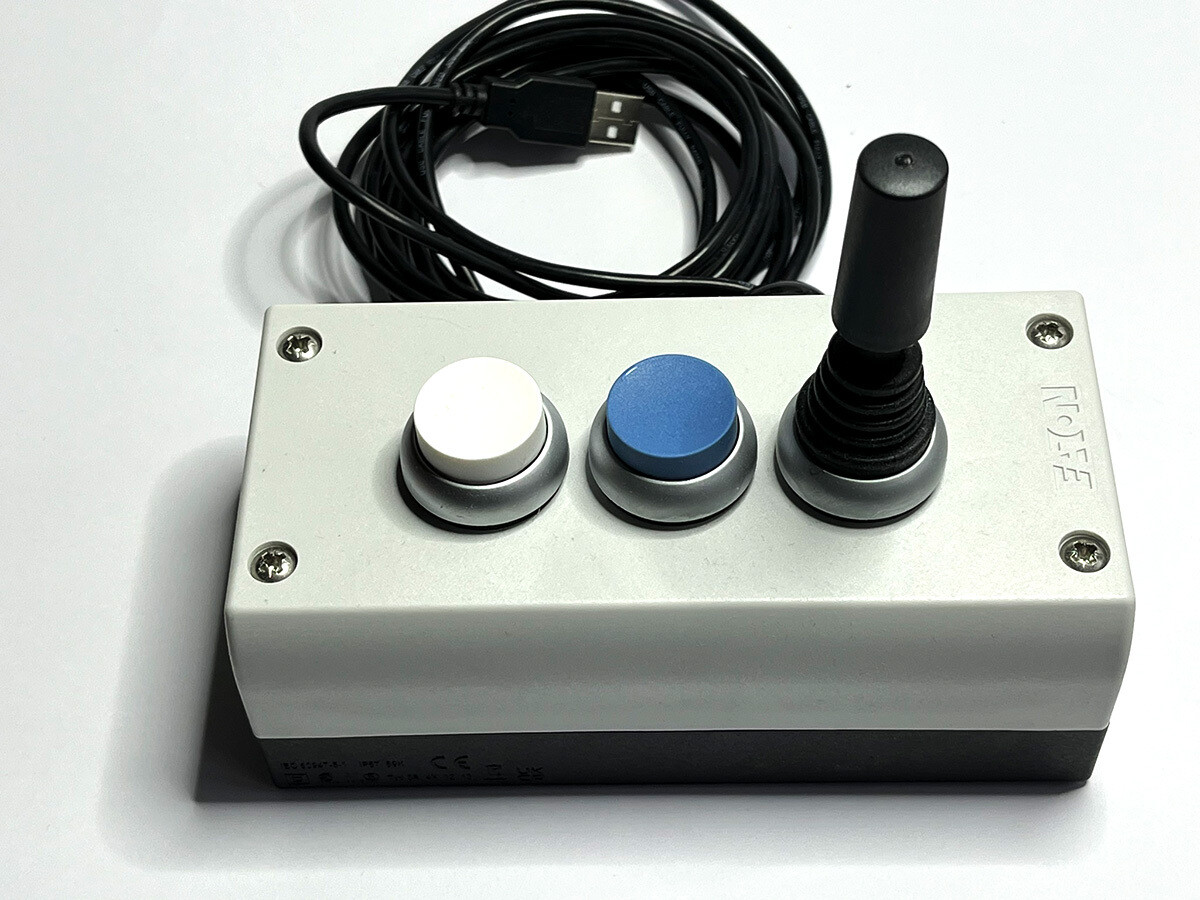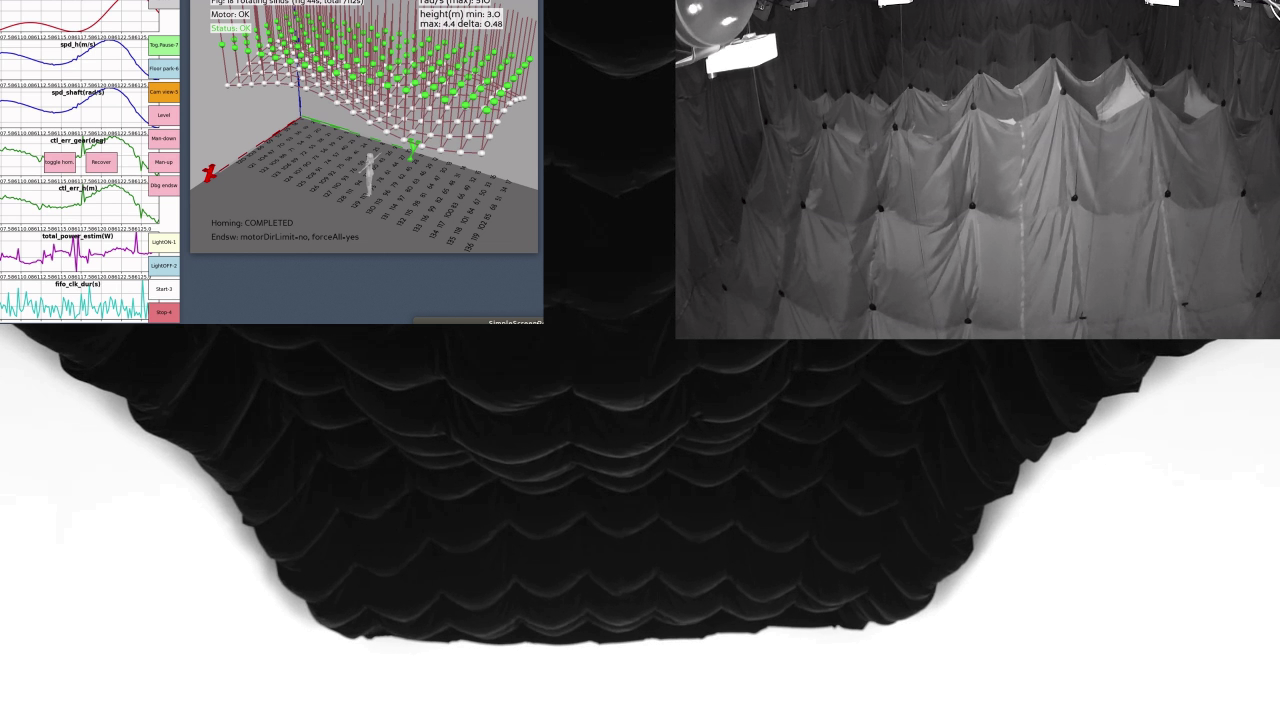
- Projects & News
- Hits: 7450

The owlDrive is originally designed for robotics applications without the background of operating more than 62 of them simultaneously in one chassis. Due to the requirement to control significantly more motor drivers synchronously, we have developed the owlDrive mesh as a software variant. This means that we can now go to the physical limits of the CAN bus and form device clusters to enable animations of several hundred motors in one animation project.
The owlDrive mesh is not available in the online shop, as it must be adapted to the requirements of the respective animation as part of a project, including the control technology.
Would you like to implement your trade fair demo, art project or other animations with the owlDrive mesh? Then please feel free to contact us.


Control and simulation program to control 136 owlDrive winches for a synchronic animation.

The artwork Absent Sky is an approx. 5.5m x 10m spatial installation, in which the absolutely black ceiling in the white room moves like a cloud and exerts a breathtaking effect on the viewer. The technical peculiarity is the material of the ceiling, it is made of a fabric with nanotubes that absorbs over 99.9% of the light and is therefore absolutely black to the eye. But the animation is also a technical feature.
The fabric hangs on 136 winches, which move the fabric up and down via strings. The winch or its motor is controlled by the brushless controller owlDrive, which is coordinated with the central control program via CAN bus communication. Each of the 136 owlDrive is permanently monitored and controlled with 5-10 commands per second. For this purpose, we have extended the CAN protocol to be able to operate a significantly higher number of owlDrive synchronously.
Link to the Artist: https://muhannadshono.com/

Have you ever used a PC keyboard with work gloves?
This is also conceivably unsuitable for daily use in production. Are you looking for simple, robust controls to issue commands on your PC? Then our push buttons and Pushboxes are just right. With the accompanying software, you can assign an individual character, command or even a mouse action to each key.
With this solution, one of our customers equipped their welding center and got rid of the keyboard and mouse. So that the welders now only press the industry-standardized button to request more material, to report the orders ready and much more.
The possible applications are manifold. You can find our Pushbuttons and Pushboxes here in the obline shop.

How to define a working area for a robot therefore we wrote a SLAM to detect cones on all corners of the area. We use a new generation of LIDAR, special made for robotic vehicles.
See how it works and visit our shop for more information about the Livox MID-360.
Cone localization (up to 30m) with arbitrary number of traffic cones at arbitrary places using a Livox Mid-360 LiDAR (360x59° FOV) In this owlRobotics project (https://owlrobotics.de), I'm using arbitrary traffic cones (as perimeter) to define a working area for a robot within 30m using a Livox Mid-360 LiDAR (360x59 FOV) on the robot. Uses LiDAR localization ( https://github.com/SylarAnh/fast_lio_... ) and cone detection. In this cone detection approach, we don't use any cone geometry. At 30m distance, the LiDAR would not be fast enough on a moving robot (5 Hz) to capture any geometry in a single frame. Here, we just use the cone reflectivity (1 point for each cone) to filter cones and constraints (surrounding points) to further filter the cones. The cool thing here is that the Livox non-repetitive scanning pattern always returns at least 1 point for each cone and this up to 30m.
We offer Livox MID-360 in oure online shop, here.
owlRobotics GmbH stands for high precision navigation algorithms for self driving robots like lawn mowers and similar vehicles, based on our Sunray-OS or open standards.